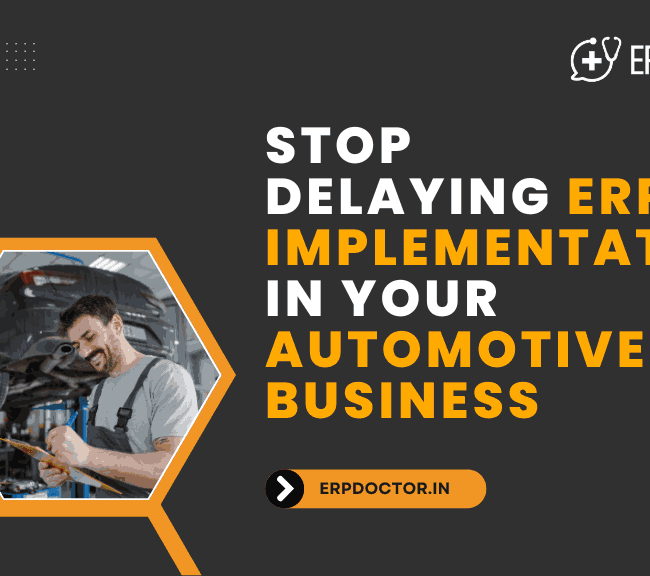
How to Avoid ERP Implementation Failures: 8 Key Solutions for Success

Stop ERP Failures in Their Tracks: 8 Fixes for a Successful Implementation
Implementing an ERP (Enterprise Resource Planning) system is a massive undertaking that can transform your business. However, many companies face significant hurdles during the process, leading to failed implementations, wasted budgets, and missed opportunities. According to industry experts, including SAP specialists, certain pitfalls are particularly common in ERP Implementation projects. In this blog post, we’ll explore the top 8 reasons why ERP implementations fail and provide actionable tips on how to avoid them.
1. Scope Creep: The Silent Project Killer
Scope creep refers to the gradual expansion of an ERP project’s scope, often due to requests for additional features or changes mid-implementation. While it’s natural to want to include more features as the system is being set up, this can significantly delay the project, inflate the budget, and divert focus from core business requirements.
How to Avoid It:
- Set Clear Objectives: Define a well-documented project scope with clear milestones.
- Manage Change Requests: Limit changes to essential updates and ensure they align with business goals.
- Stay Focused: Prioritize core functionality to avoid overcomplicating the system.
2. Customization Complexity: Less is More
One of the biggest traps organizations fall into is excessive customization. While it might seem tempting to tailor the ERP system to every minute detail of your business operations, too much customization can make the system difficult to maintain, increase costs, and even create compatibility issues with future updates.
How to Avoid It:
- Stick to Standard Features: Leverage the out-of-the-box functionality as much as possible.
- Limit Customization: Only customize features that are absolutely necessary for your business processes.
- Plan for Future Updates: Consider the long-term implications of customizations on system upgrades.
3. User Resistance and Lack of Involvement
One of the most common reasons ERP implementations fail is user resistance. Employees may fear the changes brought by the new system, or they may not see the value in it. This resistance can lead to low adoption rates, resulting in poor system utilization.
How to Avoid It:
- Involve End-Users Early: Get input from key stakeholders and employees during the planning stages.
- Provide Adequate Training: Offer hands-on, role-specific training to ensure employees feel confident using the new system.
- Communicate the Benefits: Help users understand how the ERP system will make their jobs easier.
4. Lack of Executive Support: Leadership is Key
Without strong executive support, an ERP implementation is doomed to fail. Top-level commitment is essential to secure necessary resources, align departments, and drive adoption across the organization.
How to Avoid It:
- Get Executive Buy-In Early: Involve senior leadership from the outset to ensure alignment with business goals.
- Maintain Ongoing Communication: Keep top management informed about the progress, challenges, and successes of the implementation.
5. Inadequate Change Management
Change management is crucial to the success of any ERP implementation. Companies that fail to address the organizational and cultural shifts required for the transition often face significant resistance, resulting in delays or even project failure.
How to Avoid It:
- Create a Change Management Plan: Develop a comprehensive plan that includes communication, training, and support strategies.
- Foster a Supportive Culture: Encourage employees to embrace change by framing the ERP system as a tool to improve operations, not a threat.
6. Poor Data Migration and Quality
Data migration can be one of the most challenging aspects of an ERP implementation. Poorly managed data migration can result in data inconsistencies, errors, and inefficiencies in the new system, which can severely impact business operations.
How to Avoid It:
- Perform Data Cleansing: Before migrating data, ensure it’s clean, accurate, and consistent.
- Test Migration Early: Run data migration tests in phases to catch any errors before going live.
- Set Data Governance Standards: Establish robust data management practices to ensure quality throughout the implementation.
7. Poor Vendor Selection
Choosing the wrong ERP vendor or implementation partner can make or break your project. A vendor lacking the right experience, support infrastructure, or understanding of your industry can cause delays, cost overruns, and lead to a suboptimal implementation.
How to Avoid It:
- Do Your Research: Vet potential vendors based on their experience with your specific industry and ERP needs.
- Check References: Ask for case studies and references from similar businesses to assess their track record.
- Ensure Long-Term Support: Look for a vendor who offers ongoing support, maintenance, and training.
8. Poor Communication and Lack of Alignment
A breakdown in communication across teams can be disastrous for ERP implementation. If project teams aren’t aligned or if there’s a lack of transparency in decision-making, it can lead to confusion, delays, and missed expectations.
How to Avoid It:
- Maintain Open Communication: Keep all stakeholders informed and engaged throughout the process.
- Align IT and Business Teams: Ensure both technical and business teams are working together toward common goals.
- Establish Clear Reporting Channels: Set up regular status meetings and reporting systems to keep the project on track.
How to Ensure ERP Success
An ERP implementation is an investment that can greatly benefit your business if done right, but it’s not without its challenges. By avoiding the 8 most common reasons ERP implementations fail, you can ensure your project stays on track and delivers the results you expect.
In summary, focus on:
- Defining a clear scope
- Limiting customizations
- Engaging users and leadership early
- Implementing a solid change management strategy
- Ensuring proper data migration
- Choosing the right vendor
By addressing these key areas, you can avoid the pitfalls that cause many ERP projects to fail, and instead position your business for long-term success with an optimized, fully integrated ERP system.
If you would like to know more about our services, please visit us at: https://erpdoctor.in/
Want to speak to an expert? Fill in the form below, and we will be in touch with you shortly!







